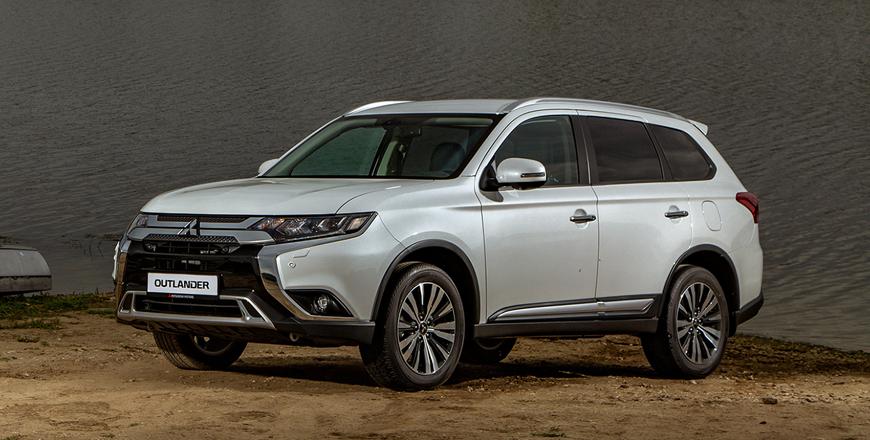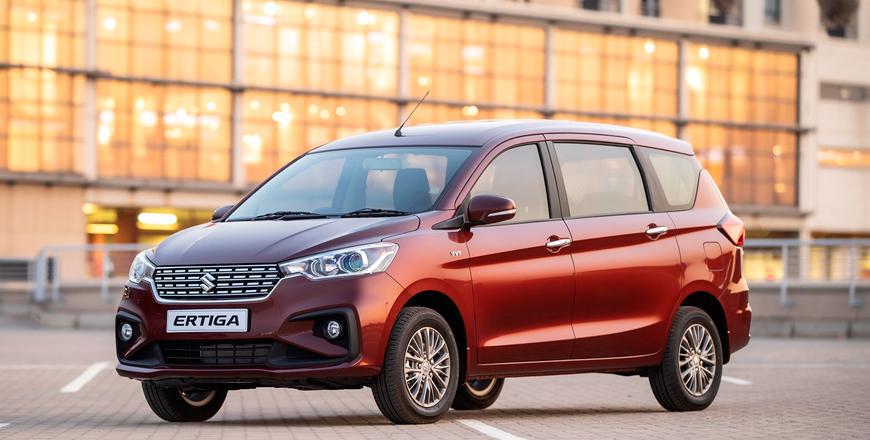You are here
Mitsubishi L200 2.5 DI-D GLX Double Cab 4x4: Prolific player in popular pick-up segment
By Ghaith Madadha - Nov 04,2019 - Last updated at Nov 04,2019

Photos courtesy of Mitsubishi
Among the most popular player in the popular compact pick-up segment which accounts for some 90 per cent of truck sales in the Middle East, the Mitsubishi L200 is offered with a range of engines, drive-line, cargo bed and equipment levels. Suitable for work, daily drive, leisure and lifestyle needs depending on how its specified, the featured double cab 4x4 L200 version with the 134BHP version of Mitsubishi’s 2.5-litre turbo-diesel engine and the mid-range GLX trim level, is probably the most versatile for a combination of uses.
Eager demeanour
Set up for perhaps the best compromise between affordability, comfort, capability and efficiency as driven, the Mitsubishi L200 is nevertheless one of the most recognisable trucks in its segment, with a slightly more rearward cabin, sleekly wedged bonnet, shorter front and longer rear overhang from profile. Somewhat more futuristic in its eager stance and sense of momentum, the L200 is also slightly smaller and with shorter wheelbase than many competitors, which lends it a slightly better agility in narrow and winding roads than many competitors.
Practical and utilitarian the L200 rides on comparatively narrow 205R16C tyres in GLX trim level for good comfort, off-road ability, durability and lower cost and fuel consumption, but can also be specified with chunkier 245/70R16 tyres in GLS guise and above. Its sportily low bonnet allows for excellent in-class visibility to confidently place it on narrow roads and off-road conditions and its narrower body helps make it easier to manoeuvre. Meanwhile, a comparatively short front overhang and steeply rising rear overhang allow for generous off-road driving angles.
Rugged efficiency
Offered exclusively with in-line 4-cylinder engines across the range, the L200’s most prolific intercooled common-rail turbo-diesel 2.5-litre engine is available in different states of tune between 108BHP to 175BHP for various markets, including the 134BHP mid-range version driven. Developing maximum power at 4,000rpm and 239lb/ft torque at 2000rpm, the L200’s headline figures may not be especially impressive, but with a lighter 1,805kg weight than most rivals, performance is nevertheless as adequate as most, and includes a 167km/h top speed, and frugal estimated 7.3l/100km combined fuel efficiency.
An honest and rugged truck, the L200 has the power needed to keep up with traffic in acceleration and overtaking, and more importantly generous torque for hauling and towing. From idling engine speed, slight some lag is best remedied by launching from standstill by progressively lifting off the clutch to build momentum towards its more generous mid-range. If not the quietest in its segment, the L200 is nevertheless relatively refined in its flexible mid-range, with diesel clatter, however, more evident at idling and higher revs.
Off-road abilities
Especially good for a truck is the L200’s 5-speed manual gearbox, which with crisp, close and exact shifts and well-positioned gear lever falling easy to hand, make it a pleasure to work to keep revs in a mid-range sweet spot. At its smoothest and most efficient in rear-wheel-drive mode for on road driving, the L200’s four-wheel-drive can be engaged for loose and low traction off-road driving terrain, while low gear four-wheel-drive can be selected to access maximum power at a crawling pace for more extreme off-road conditions.
Boasting 200mm ground clearance and a comparatively shorter wheelbase, the L200 enjoys a generous 24 degree break-over angle, and 25 degree departure, 30 degree approach and 40 degree side slope angles for off-road driving. Built on rugged ladder frame construction with independent front double wishbone and tough live axle and leaf spring rear suspension, the L200 easily takes lumps, bumps and worse, but can feel slightly bouncy on rebound at the rear when not carrying a load. This also translates into some rear wheelspin under hard acceleration through tight corners.
Manoeuvrable and comfortable
Agile and manoeuvrable through dusty trails with light steering with decent road feel for its class, the L200 also features responsive and effective front disc and rear drum brakes. Confident and settled on highway, and with good stability, it meanwhile felt eager into and balanced through corners, despite some body lean. Easy to drive with comfortable seats, alert driving position with tilt-adjustable steering and good visibility including big side mirrors, the L200 also features user-friendly controls, layouts and instrumentation inside its utilitarian yet comfortable cabin.
Un-fussed and intuitive with tough hard wearing plastics, trim and fabric upholstery, the L200’s cabin is comfortable and roomy, if not as spacious and slightly narrower than some of its larger competitors, which also benefit from wider rear door access. Standard equipment levels are useful and practical, and include two rear head restraints and three-point seatbelts, air conditioning, keyless central locking, 4-speaker audio system, ABS brakes with electronic brakeforce distribution, electronic stability and traction control, driver and passenger airbags, electric windows and tyre pressure monitoring.
TECHNICAL SPECIFICATIONS
- Engine: 2.5-litre, in-line, common-rail turbo-diesel, 4-cylinders
- Bore x stroke: 91.1 x 95mm
- Compression ratio: 17:1
- Valve-train: 16-valve, DOHC
- Gearbox: 5-speed manual, four-wheel-drive
- Driveline: low gear transfer
- Power, BHP (PS) [kW]: 134 (136) [100] @4,000rpm
- Specific power: 51BHP/litre
- Power-to-weight: 74.2BHP/tonne
- Torque, lb/ft (Nm): 239 (324) @2,000rpm
- Specific torque: 130.8Nm/litre
- Torque-to-weight: 179.5Nm/tonne
- Top speed apprx. 167km/h
- Fuel consumption, combined: 7.3-litres/100km (est.)
- Fuel capacity: 75-litres
- Length: 5,200mm
- Width: 1,785mm
- Height: 1,775mm
- Tread, F/R: 1,520/1,515mm
- Overhang, F/R: 860/1,340mm
- Minimum ground clearance: 200mm
- Loading floor height: 845mm
- Cargo bed length: 1,520mm
- Kerb weight: 1805kg
- Gross vehicle weight: 2,850kg
- Suspension, F/R: Double wishbones/live axle, leaf springs
- Steering: Power-assisted rack & pinion
- Turning circle: 11.8-metres
- Brakes, F/R: Ventilated discs, 294mm/drums, 294mm
- Tyres: 205R16C
Related Articles
First introduced in 2012 and revised twice since, Mitsubishi’s long-serving third generation Outlander crossover SUV remains a convincing pr
With a shrinking post-lockdown economy, reduced purchasing power, re-focused priorities and other restrictions a reality for many people, th
Slightly larger than its predecessor, the Suzuki Ertiga arguably went up a segment from “mini” to “compact” MultiPurpose Vehicle (MPV) when


















